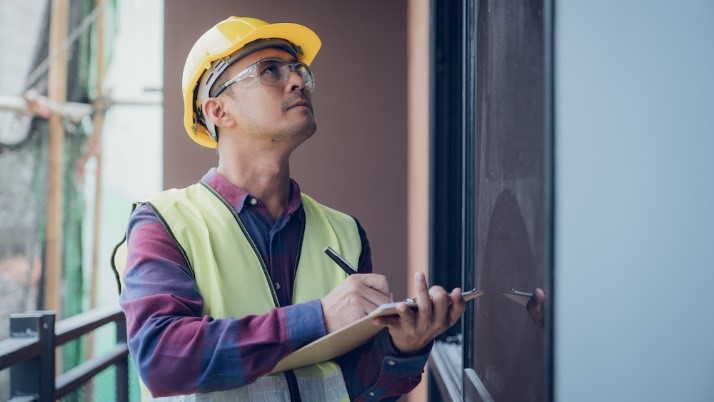
For 40 years, the International Code Council (ICC) has celebrated advances in the construction of safe, sustainable, affordable and resilient buildings and homes each May, during Building Safety Month. Meant to raise awareness about building safety, this year’s campaign theme is Safer Buildings, Safer Communities, Safer World. As most buildings are currently shuttered due to COVID-19, the first week’s virtual events focused on: “Disaster Preparedness, Building Codes and America’s Response to COVID-19.” Week 2 will cover water safety. Week 3, Resiliency. Sustainability. Innovation. And Week 4: Training the Next Generation.
Building Safety Tips & Risk Management Best Practices
Here are tips for keeping your building safe:
- Keep exits clear and ensure that exits are identified.
- Provide handrails for steps and stairwells.
- Repair any sidewalk/driveway cracks and potholes.
- Install ground-fault circuit interrupter (GFCI) breakers for wet areas like kitchens and bathrooms.
- Install slip-resistant stair covering.
- Smoke/Carbon monoxide detectors should be hardwired with battery backup.
- Properly service and inspect fire sprinkler systems following all applicable regulations and standards.
COVID-Related Building Safety
Most efforts relative to the Coronavirus focus on minimizing the risks which directly relate to the disease. However, building owners and managers should simultaneously concentrate on ways to minimize the risks which could lead to injuries or accidents in the workplace as a result of the virus. Here are some tips for doing just that:
Keep it Clean
Clean and disinfect frequently touched surfaces such as doorknobs, light switches, countertops, handles, faucets, cabinet knobs, etc. Use soap and water to keep surfaces are free of germs.
Mark your Territory
Inspect walkways and parking lots, eliminating potholes, depressions, and uneven surfaces, or wheel stops in need of repair. Prominently mark changes in elevation, parking stops, and parking spaces.
Prevent Falls
Reduce the risk of slips, trips, and falls by installing non-slip stair treads or slip-resistant stair coverings.
Light the Way
Prominently mark means of egress. Install emergency lighting. Make sure exit signs should are identified and illuminated.
Check the Breakers
Review electrical components. Check GFCI breakers in wet areas such as kitchens and bathrooms. Review electrical panels and check for missing breakers and covers. Establish a clear space of 36 inches around each one.
Show of Support
Properly install railings and balusters. Make sure guardrails have a height of at least 42 inches. Balusters should not exceed four inches apart. Provide handrails for steps with four or more risers. Prevent climbing hazards by removing or protecting horizontal balusters.
Armor Up
Maintain alarms and detectors. Verify smoke and carbon monoxide detectors are operational. They should be hardwired and have battery backup. Institute a testing program to make sure equipment works.
Enable Egress
Check fire escapes. Remove AC units that block egress onto fire escapes. Inspect the ladder mechanism for functionality. Also, verify street access to the fire escape. Thoroughly inspect and test critical components, such as capacity, structural stability, tiebacks for corrosion, or hidden defects.
Check Sprinklers
Service and inspect fire sprinkler systems. Inspect fire sprinklers to make sure they remain operational and by following applicable regulations and standards. Keep inspection records on file.
Craft a Plan
Create an emergency response plan. Set up a response team and develop an evacuation plan. Designate someone whose job it will be to call 911 in the event of an emergency, so he or she can direct first responders to the location.
Subscribe and Save
Sign up for the Allied Universal Fire Life Safety Training System, which enables property management companies to manage one site or an entire portfolio, with all users in the same system. The system allows you to train occupants, floor wardens, and fire safety directors. All user training and testing are recorded. Quick access to building-specific information is sent, in real-time to emergency responders.









